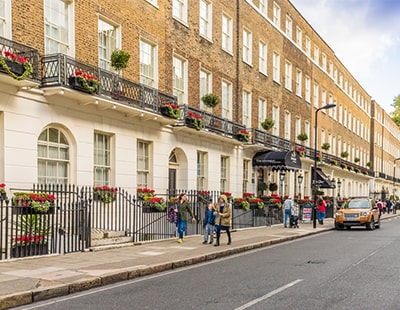According to Assist Inventories, though, ‘the global housing trend for designing new micro apartments is about more than just saving space’. It says these smaller homes should also be energy efficient and affordable, even in the UK’s priciest cities.
In the US, developers in cities such as New York and San Francisco are currently building whole complexes for micro flats and apartments. Some interesting parallels exist between London and San Francisco, in particular, with both cities suffering from an acute housing crisis.
There are not enough homes to house a rapidly expanding population and, as a consequence, rents have soared. Rents in San Francisco are the highest in the US, while London – of course – has the highest rents in the UK.
However, despite the micro nature of the apartments – with living space for a micro apartment typically between 16 and 36 square metres – ‘energy efficient micro flats’ are designed to feel bigger and more open than their actual size. What’s more, they usually aim for a community feel and sometimes include high-end amenities including gyms, recreation areas, spas and bike storage facilities.
In recent years architects have been able to persuade some politicians that smaller properties are the way forward, and, more than anything, a means by which to resolve London’s well-documented housing crisis.
London Mayor Sadiq Khan, for example, has loaned £25 million to developer Pocket Living to build more than 1,000 affordable small homes by 2021 (with the loan to be paid back by 2030). Another developer based in the capital, U+i, also wants to convince local authorities to let it build ‘compact-living flats’ on council-owned brownfield land, with each block containing around 200 micro flats, with rooftop gardens and workspaces.
Property investors and landlords are being encouraged to invest in these space-saving properties because of their affordability factor. Pocket Living, for instance, says its homes can be kept at 20% below real market value because it negotiates cheaper land deals with councils and uses cost-efficient factory production.
This all forms part of an emerging market for small or compact homes. In May this year, the British Property Federation (BPF) – in partnership with JLL – published a new definition for micro-living, which some saw as a game-changer for the industry. Previously, without a clear definition for micro apartments and recognition of them in the planning system, developers have found it difficult to get projects off the ground.
A Compact Living Working Group – consisting of micro-apartment developer Inspired Homes, the BPF and other developers/property consultants working in this space – was established to define micro living. After consulting with the Working Group, the BPF and JLL conducted detailed research of the terminology used to describe small housing products from across the world to come up with three micro living categories: compact living, co-living and shared living, in the hope that this would pave the way for the inclusion of these accommodation types in the UK planning system.
Ian Fletcher, director of real estate policy at the British Property Federation, said at the time: “We wanted to unpack what micro-living is, as it comes in various shapes and forms and is not always well understood as a result. About a third of renters live in shared houses at present and therefore, to some extent, micro living is already a reality for many renters, and so there is scope to assess whether purpose-built micro living can play a bigger role in providing much-needed new homes.”
He added that it was important that this sector ‘is better understood – particularly if there are people who prioritise location over the size of their home, and find value in the societal gains brought by more people living in central urban areas’.
In recent years, architects, designers, planning experts and developers across the world have sought to find innovative solutions to the rise in housing issues in densely populated urban areas, from modular homes and Lego-style tower blocks to sleeping pods.









.png)










Join the conversation
Be the first to comment (please use the comment box below)
Please login to comment